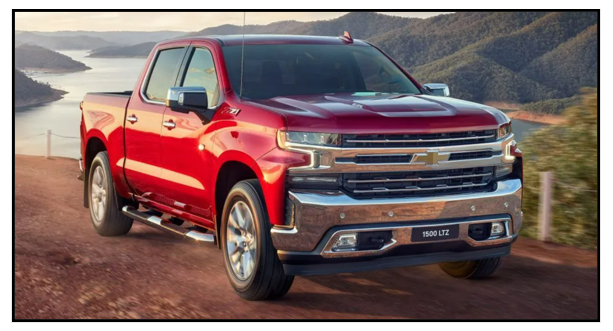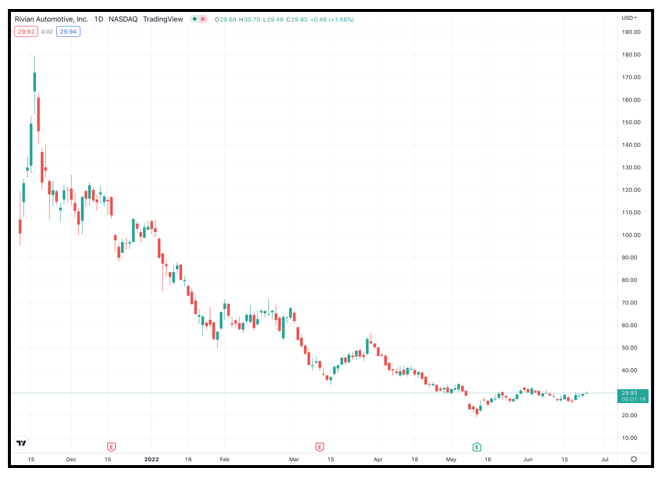Many electric vehicle manufacturers seem to be running low on battery.
Building prototypes is easy, but mass production is hard, as many EV start-ups are now discovering.
This weekend, The Wall Street Journal reported that Rivian (RIVN) is having trouble convincing suppliers to allocate the parts needed to build its popular EVs. The news couldn’t come at a worse time. And this issue serves as a great example of what’s going on throughout the industry.
By all accounts, Rivian makes a pair of great trucks: the $67,500 R1T pickup, and the $72,500 R1S sport utility vehicle. They’re distinctive, hip and well made.
Sandy Munro, a noted automotive industry consultant, called the R1T remarkable for its thoughtful design, responsive power and clever engineering.
Munro liked the truck so much that he personally purchased one of the 2,500 vehicles that have been produced in the first three months of this year.
Related Post: Pop a Split With Tesla
If that production number seems low, it is.
Despite rave reviews from consultants, journalists and customers alike, Rivian has been mired in what Elon Musk once called production hell. The WSJ notes that parts shortages and the logistics of moving thousands of key components have curtailed production.
Earlier this year, a bottleneck in the supply of aluminum battery pack enclosures led the company to cut 2022 production targets.
Even worse, some suppliers needed to be convinced to ramp up production for the start-up, according to a former operations chief.
Concerns from suppliers are likely to persist, mainly because the entire automotive sector is simultaneously going all-in with electrification.
Suppliers can stick with legacy companies and build longer-term relationships or take a chance with start-ups that have no manufacturing history and limited capital.
Which would you choose? Obviously legacy companies.
The all-electric Silverado, a pickup from General Motors (GM), and the Lexus RZ 450, a battery-powered version of Toyota Motor’s (TM) best-selling SUV, are headed to showrooms later this year.

Ford (F) began selling its impressive lineup of Lightning pickups last week, and executives quickly announced plans to ramp up production to 150,000 units annually, an increase of 275%.
R.J. Scaringe, Rivian’s 39-year-old CEO, told The WSJthat the company is currently running a single 10-hour shift two or three times a week, depending on bottlenecks.
In the second half, he hopes to ramp up production to two shifts each day, running five days a week.
Rivian lost $1.6 billion in the first quarter, while reporting only $95 million in sales.
Scaringe says the second half will be better as supply-chain issues ease and production ramps up.
More Speed Bumps Ahead
Unfortunately, the opposite outcome is more likely.
Supply-chain issues and production woes should increase as larger competitors like Ford demand more of the limited EV supplies.
After reaching $179.47 last November, Rivian shares sank to $19.25 in May, with a market capitalization of $160 billion.
The decline reflected both the company’s supply-chain challenges and the absurdity of the post initial public offering (IPO) valuation.
Investors were clearly betting that Rivian was the next Tesla (TSLA). That wager is now being aggressively unwound.
Shares of Rivian and other EV makers are likely headed much lower as the grim rigors of scaling mass production unfold. Some may not survive.
Lordstown Motors (RIDE) and Canoo (GOEV) were once high-flying IPOs. Both are now facing existential crises, according to documents filed at the U.S. Securities and Exchange Commission (see here and here).
Related Post: Welcome to the Omniverse
Executives at each company told investors they will need to raise additional capital. Shares are down from $32.50 to $1.83, and $22.47 to $3.32, respectively.
In fairness, Rivian is in a better position. The company does hold $17 billion in cash. The larger problem is perception about management and the business.
To meet the stated 2022 production goal of 25,000 units, the company must increase manufacturing capacity by 9.5 times in the second half.
Smaller EV businesses look like a chain-reaction pileup on the interstate.
They’re stuck in a situation that is both unavoidable and rigged against them. When the inevitable bad news comes, much lower share prices will follow.
I recommend that investors resist the urge to bargain-hunt in this group, as the worst could be yet to come.
Fortunately, a down market can provide as many, if not more, opportunities than a bull run for investors who understand how to identify and utilize them.
This week, the markets are rallying and people think this is the end of the bear market …
They’re sorely mistaken.
Weiss Ratings’ new service, Crisis Profit Trader, can show investors exactly how to do that with detailed explanations for every opportunity, all at 50% off.
Click here or call toll free 877.934.7778 to get started today.
Remember to always do your own due diligence before buying anything.
Best wishes,
Jon D. Markman


